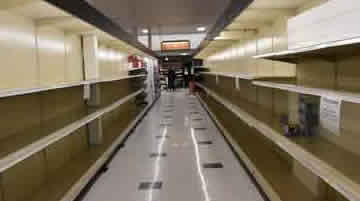Supply Chain as Chief Expediter?
Should the chief supply chain officer at least temporarily be re-titled as "expeditor in chief?"
I say that because the severe shortages of many things we saw in 2021 - notably of course computer chips - continues to spread.
Silly me - last year I really thought supply and demand would run their usual course and shortages would really tame done by the middle of this year.
| GILMORE SAYS: |
WHAT DO YOU SAY?'
Are we going to see a stretch where we stay clear from war, pandemics, natural disasters and new “black swans,” so that supply will be able to react to demand and higher prices to reach a state of equilibrium.
Send us your
Feedback here
|
I appear to be very wrong.
Now part of that is new disruptions stemming from the Russian invasion of Ukraine. Case in point: it turned out Ukraine was by far the world leader in producing sunflower oil, used heavily in many food products. Now exports of the oil are highly curtailed, to say the least.
That global shortage has caused the price of alternative cooking oils such palm and soy to jump 40-50% since the invasion began in February. And it led Indonesia, which produces 60% of the world's palm oil, to ban exports of the commodity this week so it could use its supply to hold prices down for its own citizens.
Add to that the crazy goings on in China, where all factories around Shanghai were ordered closed and people ordered to stay indoors for almost a month now due to its extreme - some might say absurd - "zero tolerance" reaction to a new (but small) COVID-19 outbreak. This has caused major new supply disruptions, after several similar disruptions in China due to COVID policy since the start of the pandemic.
Nearly everywhere, supply chain executives are under tremendous pressure to secure supply - and then how to manage the demand side given what that supply projection looks like.
Sales and Operations Planning (S&OP) meetings must be quite an event for many companies right now. S&OP gurus have always said - I am not sure completely correctly - that S&OP was strategic, and not about short term inventory allocation. I bet that maxim for now at least is gone with the wind.
All the way back in May 2021, we wrote a piece on an auto parts factory in West Virginia owned by Italian company Sogefi. Earlier in the year, the absence of one 12-cent part - one of 20 components in the final product - shut down an assembly line at the plant for two weeks. A shortage of 26-cent corrugate boxes had delayed a shipment of a part selling for about $33 apiece.
After Sogefi was late on deliveries of one part to an auto OEM, it began expediting shipments e the part in twice-daily truck runs. The added cost of the 800-mile round trips came at Sogefi's expense. Just one anecdote on life in supply chain now.
What took me in this direction for this week's First Thought column was a piece I saw by a person named Michael Snyder on themostimportantnews.com web site. It was titled - are you ready - "Chronic Shortages of a Few Items Now Will Evolve into Chronic Shortages of Hundreds of Products Later in 2022"
Now I do not know of Snyder, but it would appear he is not exactly an optimist. He is author of the recent book "Seven Year Apocalypse."
Still, I found his line of thinking very interesting.
 "What we have witnessed so far is just the beginning of the story," Snyder begins, adding that "Even the United Nations is admitting that we are heading into the worst global food crisis since World War II. So if you think that global supply chain problems are severe now, just wait until you see what is coming next." "What we have witnessed so far is just the beginning of the story," Snyder begins, adding that "Even the United Nations is admitting that we are heading into the worst global food crisis since World War II. So if you think that global supply chain problems are severe now, just wait until you see what is coming next."
While there are chronic shortages of some items, such canned pet food, most items are still available most of the time. It isn't going to last, Snyder says.
Did you know, for example, that there is a severe shortage of chlorine? That started largely from the destruction of a manufacturing facility in Louisiana by Hurricane Laura in 2020, a plant that made 40% of the country's chlorine tablet supply.
But the rebuilding of that factory is going slow - because of the also severe shortage of construction materials.
I also did not realize there is a very bad baby formula shortage. Snyder quotes from a story on a woman in Utah who said this: "I go around in our area, any stores I can, can't find anything around here. I have friends in northern Utah, they're having to send me stuff, so I'm having to pay even more."
Snyder sees this all getting much worse, for reasons not entirely clear. I am sure it is his book.
Are we going to see a stretch where we stay clear from war, pandemics, natural disasters and new "black swans," so that supply will be able to react to demand and higher prices to reach a state of equilibrium, as described in every economics 101 text book?
Someday certainly but maybe not until we experience many more months or even years of this (seven?). I think supply chain execs will be in mostly expediting mode for a good while longer.
Any reaction Gilmore's column? Let us know your thoughts at the Feedback button (email) or section below.
|








 "What we have witnessed so far is just the beginning of the story," Snyder begins, adding that "Even the United Nations is admitting that we are heading into the worst global food crisis since World War II. So if you think that global supply chain problems are severe now, just wait until you see what is coming next."
"What we have witnessed so far is just the beginning of the story," Snyder begins, adding that "Even the United Nations is admitting that we are heading into the worst global food crisis since World War II. So if you think that global supply chain problems are severe now, just wait until you see what is coming next."


